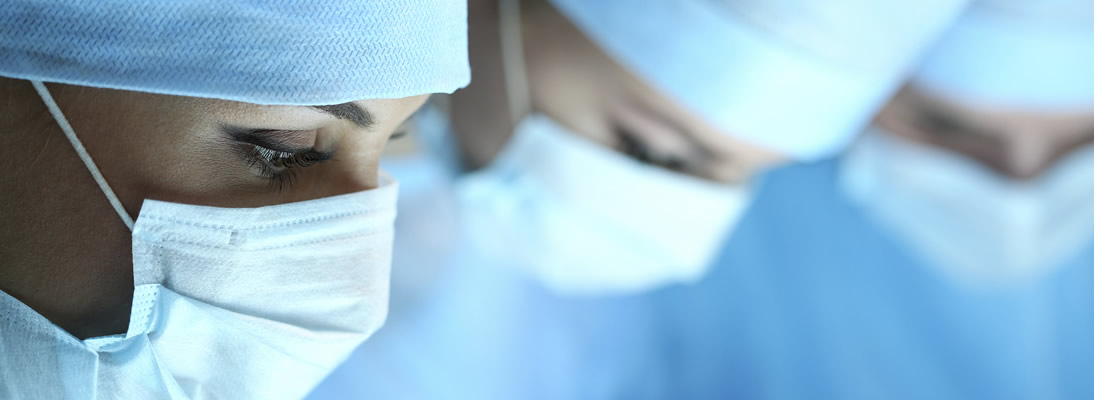Hydrodistention With Cystoscopy
Hydrodistention with cystoscopy allows physicians to take a much closer look at the bladder wall. It’s use, however, is controversial. The American Urological Association Guidelines for the Diagnosis and Treatment of IC/BPS no longer suggests that this procedure be used unless the diagnosis is in doubt.(1,2) The European Society for the Study of Bladder Pain Syndrome, on the other hand, requires a hydrodistention before they will make a diagnosis of IC/BPS.(3) Hydrodistentions may provide modest relief in IC symptoms which can last from three to six months. As a result, it requires careful consideration and discussion with your urologist.
Why should I have a hydrodistention with cystoscopy?
Hydrodistention with cystoscopy has two roles. It can assist in the diagnosis of Hunner’s lesions and it may also be beneficial as a short-term treatment. For patients who have had symptoms for many years, this test can verify the health of your bladder wall. A normal bladder wall establishes that your symptoms are coming from beyond your bladder (i.e muscles, nerves, etc.) If lesions are present, the AUA encourages their prompt treatment.
How is a hydrodistention with cystoscopy done?
 The stretching of any hollow organ (bladder, stomach) can cause severe pain thus hydrodistention of the bladder is ALWAYS performed under general or spinal anesthesia in a hospital setting. Patients are usually admitted for an outpatient procedure and most leave the hospital a few hours later.
The stretching of any hollow organ (bladder, stomach) can cause severe pain thus hydrodistention of the bladder is ALWAYS performed under general or spinal anesthesia in a hospital setting. Patients are usually admitted for an outpatient procedure and most leave the hospital a few hours later.
While you are asleep, the physician will first insert a cystoscope through the urethra and into the bladder to take a close look at the bladder wall. They are looking for any Hunner’s ulcers, lesions, growths or unusual findings (i.e. mesh which has eroded into the bladder). They will then begin the hydrodistention portion of the procedure by filling your bladder with fluid at a very low pressure. The American Urological Association recommends low-pressure (60-80 cm H2O), short duration (less than 10 minutes) procedures. High pressure, long duration procedures should not be performed to reduce the risk of bladder rupture.
After several minutes, the fluid is released. The physician will then look at the bladder wall again. In years past, they looked for small broken blood vessels (glomerulations or petechial hemorrhages) that were often found in IC bladders. In the 2022 AUA Guidelines, these are no longer considered meaningful as they are found in other medical conditions and healthy patients as well.
If the doctor finds anything unusual, they may also perform a biopsy to rule out bladder cancer, eosinophilic cystitis or other bladder conditions. Your doctor may also take some pictures or video of your bladder for your medical records and personal use. Of course, if any Hunner’s lesions are found, they should be promptly treated.
Recovery in the hospital
Once the hydrodistention is complete, you will be sent to the recovery room. Some patients find the post op recovery very easy while others report pain, pressure and discomfort after the procedure. Under NO circumstance should you drink soda, cranberry or orange juice if offered. Please request a lower acid drink such as water or apple juice instead.
It may take several hours for your bladder to wake up enough for you to urinate. The first few times you do urinate afterwards, your urethra may be quite painful. This is normal because your urethra was stretched by the cystoscope. It’s a classic “bite your lip” moment. You will get better. Your urine may also contain blood or clots that should also diminish over time.
Recovery at home & pain care
Once you are able to urinate on your own, you will be sent home under the supervision of family and/or friends. Because the pain can be severe for the first 24 to 48 hours, patients are normally provided a small amount of stronger pain medication, such as short acting opiate (i.e. Norco). In general, patients slowly improve throughout the following week. If your symptoms or bleeding worsens, your pain levels increase and/or you experience a sudden fever, you should contact your physician immediately. Postoperative bladder infections are frequent complications and may require antibiotic therapy.
The recovery period varies. Some patients can return to work after a few days while others require a week off work. You should rest and follow the IC diet carefully to avoid irritating your traumatized bladder wall. Some patients find using a heating pad very comforting and soothing. Do not assume that you can make a long car ride or plane flight in the days after a hydrodistention. With time and gentle care, your symptoms should slowly diminish and, with luck, be reduced dramatically for up to six months afterwards. Please note, however, that some patients believe that their hydrodistentions made them worse.
Follow up care
Your physician will normally schedule a follow up visit a week or two after the procedure to review the results. Hopefully, they will be able to show you pictures of your bladder and, most importantly, describe what treatments they provided. Studies show that it may provide relief of symptoms for 30 to 54% of patients with results that decline rapidly over time. (1)
References:
- Clemens JQ et al. Diagnosis and treatment of interstitial cystitis/bladder pain syndrome. J Urol 2022. Jul;208(1):34-42
- Osborne J. New IC/BPS Guidelines Released in May 2022. ICN. May 23, 2022
- van de Merwe, et al. ESSIC Consensus on criteria, classification and nomenclature for PBS/IC: An ESSIC Proposal. Eur Urol 2008:53:60-7
Author: Jill H. Osborne MA
Revision Date: July 6, 2022

